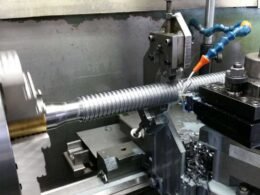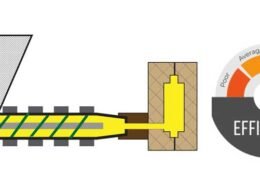The vacuum truck industry has always been driven by the need for efficiency, reliability, and environmental safety. As 2025 approaches, advancements in vacuum truck technology are reshaping the industry with smarter systems, improved performance, and greener solutions. From next-generation materials to AI integration, the latest vacuum truck technology innovations are enhancing operations across sectors like construction, municipal services, oil and gas, and waste management. Let’s explore the top innovations transforming vacuum trucks in 2025.
-
Advanced Electric-Powered Vacuum Trucks
One of the most significant shifts in 2025 is the emergence of electric-powered vacuum trucks. With sustainability driving innovation, manufacturers are prioritizing eco-friendly solutions to reduce emissions and fuel dependency.
- Battery Advancements: New lithium-ion batteries allow vacuum trucks to operate for extended periods without compromising performance.
- Reduced Operating Costs: Electric trucks eliminate fuel costs and reduce maintenance expenses tied to traditional combustion engines.
- Silent Operation: Electric models produce significantly less noise, making them ideal for urban and residential areas.
Companies investing in electric vacuum truck fleets are seeing improved operational efficiency while meeting stringent environmental regulations. These trucks are not only cleaner but also represent a forward-thinking approach to tackling climate change in industrial sectors.
-
AI-Powered Smart Monitoring Systems
Artificial Intelligence (AI) is revolutionizing vacuum truck technology by enabling predictive maintenance, route optimization, and real-time performance monitoring.
- Predictive Maintenance: AI algorithms analyze operational data to detect issues before they cause downtime, extending equipment lifespan.
- Optimized Routes: AI-integrated GPS systems streamline routes for fuel efficiency and faster job completion.
- Enhanced Safety: Smart monitoring systems can identify potential safety risks and alert operators to take corrective measures.
With AI, vacuum truck operators can now run smarter, safer, and more cost-effective operations, reducing unforeseen breakdowns and improving overall productivity.
-
Lightweight and High-Durability Materials
Materials science is vital to the vacuum truck technology innovations of 2025. Manufacturers are focusing on developing trucks with lighter yet more robust materials to increase capacity and longevity.
- Carbon Fiber Tanks: These advanced tanks offer superior strength while significantly reducing vehicle weight, allowing trucks to carry larger volumes.
- Corrosion-Resistant Coatings: Innovative coatings extend the lifespan of tanks and pipes, particularly in applications dealing with corrosive substances.
- Composite Chassis: Lightweight composite materials reduce the overall truck weight, improving fuel efficiency and maneuverability.
The shift toward advanced materials ensures that vacuum trucks are more durable, cost-effective, and capable of handling demanding applications easily.
-
Automation in Vacuum Truck Operation
Automation is a game-changer in the vacuum truck industry, improving precision, productivity, and operator safety.
- Automated Loading and Unloading: Innovations in automated systems enable vacuum trucks to load and discharge materials with minimal manual intervention.
- Remote Control Systems: Operators can now control specific vacuum truck functions remotely, improving safety in hazardous conditions.
- Self-Diagnosing Systems: Trucks equipped with automated diagnostic systems can identify maintenance requirements and send alerts to service teams.
Automation reduces operator fatigue, minimizes errors, and allows businesses to meet project deadlines more efficiently. These advancements are particularly valuable in sectors requiring rapid material recovery and disposal.
-
Enhanced Filtration and Environmental Compliance
As environmental standards tighten globally, vacuum truck manufacturers are introducing cutting-edge filtration systems to minimize emissions and hazardous waste discharge.
- High-Efficiency Particulate Air (HEPA) Filters: These filters trap 99.97% of particulates, ensuring cleaner air release during operation.
- Green Disposal Systems: Vacuum trucks are now equipped with systems that safely neutralize and dispose of hazardous waste without harming the environment.
- Zero-Emission Technologies: Hybrid and fully electric trucks reduce harmful emissions, helping companies meet sustainability goals.
These advancements align with global efforts to minimize pollution, maintain a cleaner planet, and ensure regulatory compliance across industries.
-
IoT Integration for Real-Time Data Management
The Internet of Things (IoT) is unlocking new possibilities for vacuum truck fleets by enabling real-time data collection and management.
- Performance Tracking: IoT sensors monitor key metrics such as suction pressure, fuel consumption, and equipment temperature.
- Fleet Management: Managers can track truck locations, usage patterns, and service schedules remotely.
- Data-Driven Insights: IoT systems analyze data to optimize performance, reduce costs, and improve resource allocation.
With IoT-enabled connectivity, vacuum truck operators gain unparalleled visibility into their operations, enhancing efficiency and decision-making.
-
Improved Vacuum Pumps for Higher Efficiency
The vacuum pump is at the heart of every vacuum truck, and 2025 will bring innovations that enhance suction power and energy efficiency.
- Next-Gen Rotary Pumps: Modern pumps are designed for higher efficiency, ensuring faster debris collection with minimal power consumption.
- Variable-Speed Technology: Pumps with adjustable speeds allow operators to match suction power to job requirements, saving energy and reducing wear.
- Noise Reduction: Improved pump designs reduce operational noise, creating a quieter working environment.
These advancements enable vacuum trucks to complete tasks faster and with lower operational costs, improving businesses’ bottom lines.
-
Hybrid Vacuum Trucks for Maximum Flexibility
Hybrid technology combines the benefits of electric and traditional fuel-powered vacuum trucks, offering greater flexibility for various applications.
- Dual-Power Systems: Hybrid trucks seamlessly switch between electric and diesel power, optimizing performance in different environments.
- Extended Range: Hybrid systems improve fuel efficiency, allowing trucks to operate longer without refueling or recharging.
- Reduced Emissions: These trucks contribute to lower carbon footprints, aligning with green initiatives worldwide.
Hybrid vacuum trucks represent a balanced solution for industries transitioning to sustainable operations without sacrificing power or reliability.
-
Enhanced Safety Features for Operators
Operator safety remains a top priority in vacuum truck design, and manufacturers are incorporating advanced safety features to protect workers on the job.
- Collision Avoidance Systems: Sensors and cameras help prevent accidents by alerting operators of nearby obstacles or hazards.
- Fall Protection Systems: Trucks are now equipped with automated safety harnesses and barriers to protect workers during elevated tasks.
- Ergonomic Controls: Redesigned control systems reduce strain on operators, improving comfort and minimizing workplace injuries.
Enhanced safety features ensure compliance with occupational health standards while providing a safer working environment for operators.
-
Smart Waste Separation Technologies
In waste management applications, smart waste separation technologies are transforming how vacuum trucks handle and process materials.
- Automated Sorting: Vacuum trucks can now separate solid and liquid waste automatically, streamlining disposal processes.
- Real-Time Analysis: Onboard sensors analyze waste composition, enabling operators to comply with disposal regulations.
- Resource Recovery: Advanced systems recover recyclable materials from collected debris, reducing waste volume and supporting sustainability goals.
These innovations enhance productivity and promote environmentally responsible waste management practices.
The Future of Vacuum Truck Technology
The vacuum truck technology innovations emerging in 2025 are shaping the future of industries reliant on these powerful machines. Electric and hybrid systems, AI-driven tools, IoT connectivity, and smart materials are revolutionizing the way vacuum trucks operate, making them cleaner, smarter, and more efficient.
By adopting these cutting-edge advancements, businesses can reduce costs, improve safety, and contribute to a greener future. Whether in waste management, construction, oil and gas, or municipal services, vacuum trucks of 2025 are equipped to meet the challenges of tomorrow head-on.
As industries continue to evolve, the integration of sustainable technologies, automation, and data-driven solutions ensures that vacuum trucks remain an essential asset for tackling critical tasks efficiently. The innovations of 2025 mark a new era for vacuum truck technology—one defined by progress, sustainability, and performance.
Final Thoughts
The advancements in vacuum truck technology represent a significant leap forward for businesses looking to stay ahead of the curve. By embracing these innovations, operators can achieve greater efficiency, safety, and environmental compliance.
As we move into 2025, the vacuum truck industry continues to lead the way in delivering smarter solutions that redefine how industries operate. For businesses seeking to invest in cutting-edge vacuum truck technology innovations, the future has never looked brighter.










